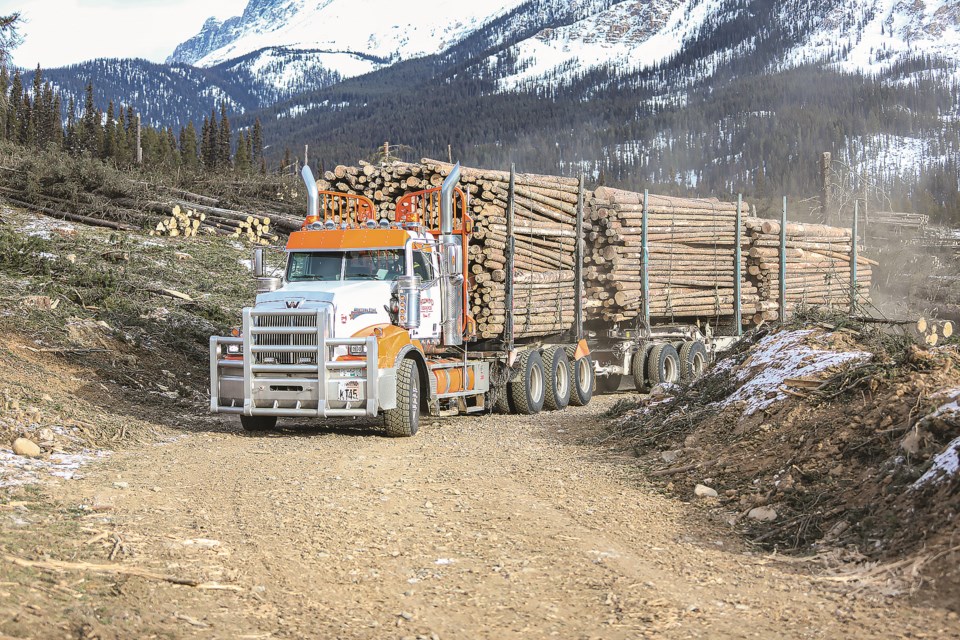LAKE LOUISE – A large swath of land has been cleared near Protection Mountain in Banff National Park to create a containment line to help fight future wildfires threatening Lake Louise and surrounding areas.
Work on the 33-hectare landscape-level fireguard along the Bow Valley Parkway began in early December, with heavy machinery on site and trucks hauling timber. Operations are expected to wrap up in mid-March and reclamation and restoration work will occur over the summer months.
Wildfire experts say a changing climate leading to longer and hotter fire seasons, combined with more than a century of fire suppression, has led to tinder dry and ageing forests that have created perfect conditions for high intensity wildfires to spread quickly.
“We’ve realized we really need to be proactive,” said Charlie McLellan, a fire and vegetation specialist for Banff National Park.
“Having this guard in place would allow us to use less resources there or gain containment early… it allows you to keep fires smaller because you might get really good containment on one side so it doesn’t grow in all directions.”
The firebreak, about 400 metres wide and 1.5 kilometres long, ties in the Bow River to a rocky scree slope on Protection Mountain, located on the north side of the Bow Valley between Castle Mountain and Lake Louise.
“We’re really trying to utilize the natural features that come off Protection Mountain in that location so we can achieve an effective firebreak with removing as little vegetation or trees as possible,” said McLellan.
According to Parks Canada, this area of Banff National Park last experienced a significant wildfire about 150 years ago.
“Typically those lodgepole pine habitats in the Bow Valley historically would have burned every 60 to 70 years in the lower montane area, and in the higher elevations a bit less frequent,” said McLellan.
In the summer 2003 wildfires in neighbouring Kootenay National Park, Parks Canada had to bulldoze emergency firebreaks on both sides of Highway 93 South near the Continental Divide to prevent the fire from spreading into the Bow Valley.
What started as two small lightning-sparked fires that came together as the Tokumm-Verendrye blaze, quickly escalated into a 40-day battle involving more than 160 people fighting the fire. The fires burned 12.5 per cent of Kootenay National Park, or about 17,000 hectares.
“They stopped that fire with a firebreak at the Continental Divide, but it’s nice to have these features on the landscape that can be identified early when a fire does occur,” said McLellan.
“We can start planning to use those early on instead of rushing to reactively put something in place. It becomes more difficult to address all the environmental concerns if you are doing it more in an emergency situation.”
Once completed, the fireguard will be more open, allowing sunlight to reach the forest floor where sun-loving plants can flourish.
McLellan said this improves biodiversity, enhances wildlife corridors and improves feeding opportunities for local wildlife like grizzly bears and elk.
“We’re optimistic this will be beneficial for wildlife species,” he said.



